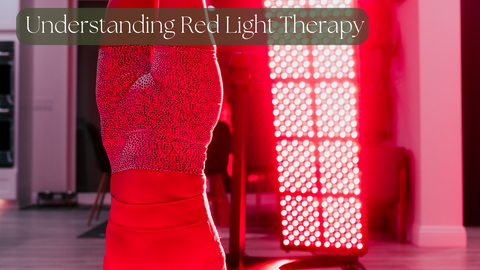Benefits of Red Light Therapy for Muscle Recovery
Red light therapy, often known as photobiomodulation therapy, has gained traction in the wellness and recovery domain for its potential benefits in aiding muscle recovery. This innovative approach utilizes low-level wavelengths of red light to penetrate the skin, targeting cells and promoting healing and regeneration. Let's delve into the various advantages of red light therapy for muscle recovery.

Understanding Red Light Therapy
Red light therapy involves exposure to low levels of red or near-infrared light, stimulating cellular function. Its non-invasive nature and reported benefits in various wellness aspects have garnered attention.
Exploring Muscle Recovery
Muscle recovery is crucial for athletes and fitness enthusiasts to enhance performance and prevent injuries. Traditional methods like rest, ice, compression, and elevation (RICE) have been standard, but red light therapy offers a promising alternative.
Mechanisms of Red Light Therapy
Increased Blood Circulation
Red light therapy facilitates increased blood flow to the targeted areas, aiding nutrient delivery and waste removal, vital for muscle repair.

Reduction of Inflammation
By reducing pro-inflammatory markers, red light therapy helps alleviate muscle soreness and inflammation after strenuous workouts or injuries.
Accelerated Healing
The therapy accelerates cellular repair and regeneration, expediting the recovery process for damaged muscles.

Scientific Evidence Supporting Red Light Therapy for Muscle Recovery
Various studies highlight the efficacy of red light therapy in enhancing muscle recovery, showcasing its ability to reduce oxidative stress and improve muscle performance.
Targeted Application of Red Light Therapy for Muscle Recovery
Different muscle groups and specific injuries can benefit from targeted red light therapy, including sports-related injuries, post-workout fatigue, and chronic muscle pain management.
Recovery from Sports Injuries
Athletes experiencing muscle strains or tears find red light therapy aids in faster healing and returning to peak performance.

Post-Workout Muscle Fatigue
Using red light therapy post-workout reduces muscle fatigue, allowing for quicker recovery between training sessions.
Chronic Muscle Pain Management
For individuals dealing with chronic muscle pain conditions, regular sessions of red light therapy can offer relief and improve quality of life.
Safety and Considerations for Red Light Therapy
While generally safe, red light therapy may have mild side effects such as temporary eye strain or headaches. Following usage recommendations and consulting a healthcare professional is advisable.
Incorporating Red Light Therapy into Recovery Regimens
Combining red light therapy with proper nutrition, hydration, and complementary recovery methods like stretching and physical therapy maximizes its effectiveness.
Combining Red Light Therapy with Other Modalities
Integrating red light therapy into comprehensive recovery regimens amplifies its benefits, facilitating holistic healing.
Real-Life Success Stories with Red Light Therapy for Muscle Recovery
Numerous athletes and individuals testify to the effectiveness of red light therapy, citing faster recovery times and improved performance.
Cost-Effectiveness and Accessibility of Red Light Therapy
Comparatively, red light therapy can be cost-effective when considering its long-term benefits and accessibility through at-home devices or professional clinics.
Conclusion
Red light therapy stands as a promising adjunct to traditional muscle recovery methods, offering accelerated healing, reduced inflammation, and enhanced performance. Its accessibility and reported efficacy make it a compelling option for individuals seeking efficient muscle recovery solutions.
FAQs
- Is red light therapy safe for all age groups?
- How often should one undergo red light therapy for muscle recovery?
- Can red light therapy replace traditional recovery methods entirely?
- Are there any long-term side effects of red light therapy?
- Is red light therapy FDA-approved for muscle recovery?
